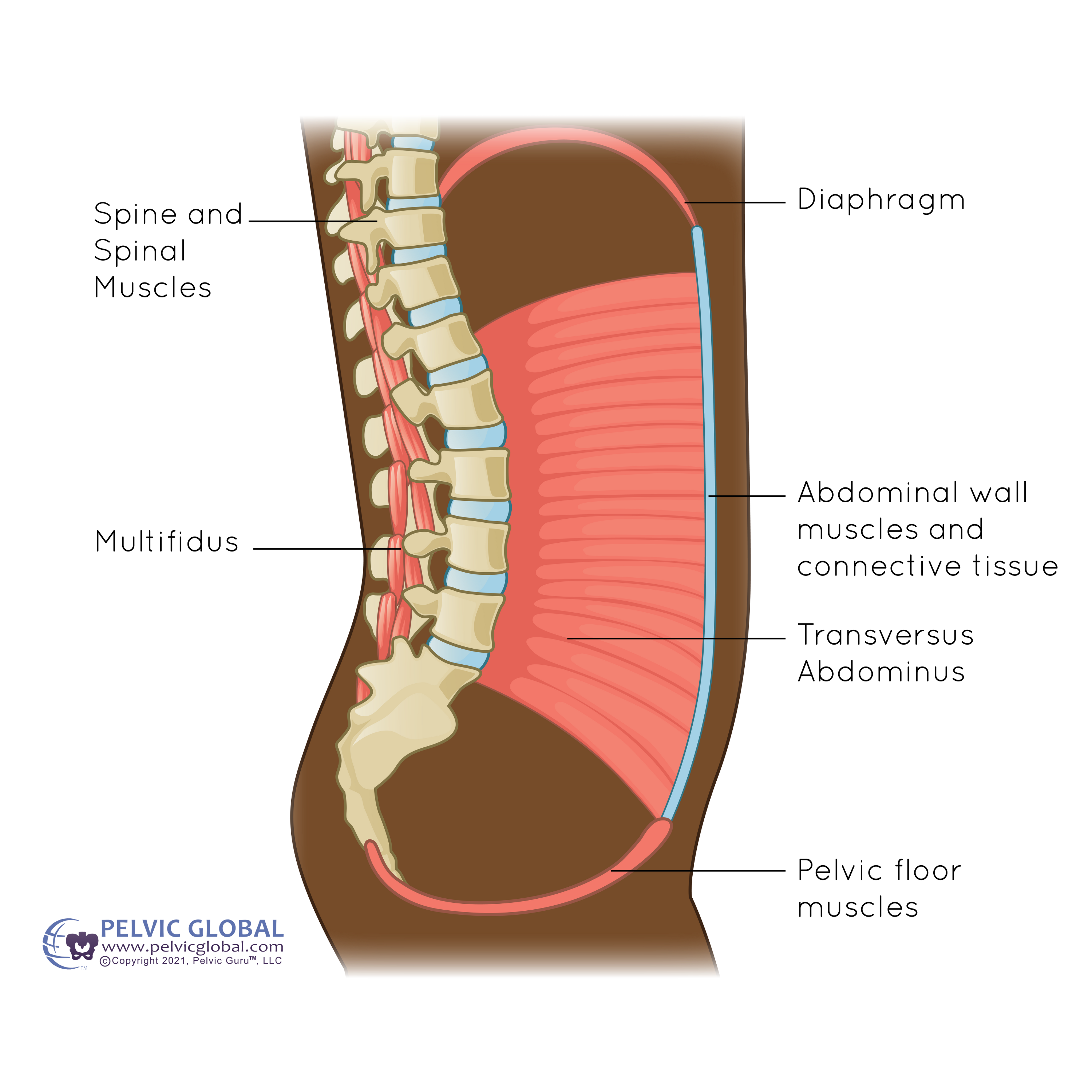Why You Should Include Big AND Small Muscle Groups in Your Workout Routine

Have you ever walked into a gym and felt entirely overwhelmed? There are so many machines and classes, but it’s hard to know where to start or which methods will help you reach your fitness goals. And getting on social media can be just as confusing — so many people offer training advice that conflicts!
Maybe you’ve walked away from workouts defeated because you just don’t know where to begin. Or maybe you’re a regular with your workouts, but you’re not sure if you’re maximizing your efforts and getting stronger. As a physical therapist, I’m here to help. Muscle growth is absolutely possible, and it doesn’t take hours every day to achieve. I love helping pregnant and postpartum mamas, for sure — but I love helping all women find a female strength training program that really works.
I’m passionate about fitness because I want every one of you to be able to look in the mirror and love the powerful woman she sees looking back. It’s not about aesthetics — it’s about building a strong body to support you as you work, mother, and age through every beautiful season of life. Strength training will literally improve the quality of your everyday life, minimizing pain and increasing your stamina to enjoy the life you have.
Why women should lift weights
Building strength: it’s not just for the boys.
Strength training comes with a massive list of benefits! Studies have shown that lifting weights regularly helps you experience:
Better sleep
Strength and resistance training improves your sleep even more than cardio workouts do. And you don’t need to sleep more hours than you used to in order to get these benefits! Strength training improves your sleep efficiency, which means you’re getting better quality rest in your regular sleep routine, instead of tossing, turning, or waking frequently.
Improved bone health
We all know that too much stress on a bone will make it literally crack under the pressure. But did you know that the appropriate amount of stress on your bones will actually make them stronger? Lifting weights increases your bone density — your bones will literally change to accommodate the extra strain over time. This reduces your risk of osteoporosis and injury!
Increased resting metabolic rate
Your resting metabolic rate (RMR) is the number of calories you burn even when your body is at rest. Boosting this number helps your organ functionality and respiratory system, and can even positively impact your neurological system! (This article from NASM can help you calculate your RMR, if you’re interested!) Strength training helps you boost your RMR over time — which means lifting weights regularly will help your body daily, even when you’re not lifting weights.
Pain reduction
When performed appropriately, strength training will reduce your pain, not add to it! Of course, you’ll experience muscle soreness, especially as you begin a new routine. But as you build muscle, you’ll be able to support your own body and protect it from those “aches and pains” that so many people believe are inevitable.
Reduced disease risk
Strength training can help you regulate your blood sugar and strengthen your cardiovascular system, reducing your risk for diabetes and heart disease. In fact, even if you already have been diagnosed with one of these, strength training can help you mitigate further damage and improve your health.
Improved self-confidence
The mental health benefits of weight lifting and resistance training deserve further study, because the results are incredible! This study (made up of women!) showed a massive increase in their “perceived physical appearance, body self-concept, and social physique anxiety” after just 10 weeks of regular strength training.
Reduced sarcopenia
Sarcopenia is the involuntary loss of muscle mass, strength and function. Muscle mass decreases approximately 3-8% per decade after the age of 30, this dramatically declines at age 60 — but this does not have to be so! Regular strength training can help you slow and reduce age-related muscle loss.
How much weight should you lift?
The goal of lifting weight is to gain muscle, officially known as hypertrophy (which means a muscle growing in size). Friendly reminder: this is accomplished through strength training in combination with eating enough protein! If you’re working out regularly but not feeding yourself enough, you won’t see the results you desire.
There’s no one number that answers this question. Instead, it depends on your starting strength level and your goals! That said, it IS important to lift weight that is more than 30% of your 1 RM (repetition maximum) for the muscle group you are lifting. Your 1 RM is the most amount of weight you can lift for 1 rep of an exercise.
If that math feels impossible, or you don’t have access to weights to find your 1 RM, do some experimentation. You want to choose a weight that loads your working muscle close to failure somewhere between 8-20 reps. Loading close to failure means you are struggling by the end of the set and feel like you can only do 2-3 more reps. If you get to the end of your set at 16 reps, but feel like you could do 100 more, you are not loading the muscle enough to build strength. While lifting really light and performing 40-60 reps might be common in some popular workout routines and you might feel a good “burn,” this does not indicate that you are working on muscle hypertrophy – you are focusing on muscle endurance (which most of us are good at anyway)!
I typically recommend lifting around 60-80% of your 1 RM (considered a moderate load) and working that muscle close to failure within 12-20 reps. If you join my monthly programming, this is what you’ll find!
What does a good weekly workout routine look like?
Here it is… the million dollar question. I’ve spent hundreds of hours scouring literature and taking continuing education courses specifically on strength training principles so that I can answer it for you!
Ideally, you should hit every muscle group anywhere from 3-10 sets per week for muscle growth. But don’t worry — once you arrive at your desired muscle mass, you can maintain it by performing just 1 set per muscle group per week. Just remember to take those sets close to failure (remember that 2-3 rep range)!
I’ve found that it’s easier to load a single muscle group to failure when working one muscle group at a time. While I have nothing against compound lifts and exercises (I use them sometimes!), they are not the staple of my programming. Why? When you use multiple muscle groups at once, it is hard to work both of them to failure because they might require different loads! I like to incorporate compound exercises sparingly in my programming. I normally do them on a fun, full body day designed to help with coordination and cardiovascular health.
Why you don’t want to skip the smaller muscle groups
When it comes to designing a workout, you must consider both your local muscle system and global muscle system. It’s really easy (and super common!) to only focus on big, showy muscle groups like your glute max, biceps and rectus abdominis (the muscle responsible for 6 pack abs). In fact, lots of group workout classes will hit these same muscle groups over and over without recovery between days or working other muscle groups, simply because “a big booty” is easier to market!
Your global muscles primarily generate power and big movements (think quads, glute max, and chest). But your local muscles are just as important! These smaller muscles primarily focus on stability prior to the activation of the global muscles.
Here’s a 6-pack abs example: the local muscles of your core are your multifidi, pelvic floor, diaphragm, and transverse abdominis. These local muscles attach directly on the spine. They should activate PRIOR to your larger global muscles of your core (erector spinae and rectus abdominis) to generate stability before you move your trunk as a whole. In technical terms, you need proximal stability prior to distal mobility. This means your local stabilizing muscles should always activate first to stabilize a joint prior before it begins moving.

Image used with permission from Pelvic Guru®, LLC www.pelvicglobal.com as a member of the Global Pelvic Health Alliance Membership (GPHAM)
When you focus only on building your global muscles, you will neglect those local stabilizing muscles, which can eventually lead to pain and dysfunction. This is why I incorporate small stability movements in every warm up for every workout in my programming, along with dedicating an entire day to pelvic floor and core stability each week.
Strength training designed by me, for women everywhere
Need a strength training program you can perform at home that helps you build global and local muscles, emphasizes your pelvic floor, and improves your strength and stamina? You’re in the right place. As a doctor of physical therapy and certified strength and conditioning specialist, I wanted to create something specifically for women that’s easy to follow and delivers on results.
My Movement Through Motherhood membership was designed for mamas and all women. It targets every muscle group every week in a manner that will not leave you feeling depleted and exhausted, and it prioritizes recovery so you can actually build muscle and reduce pain. In the MTM membership, you’ll find 4 new workouts per week – the exact ones I perform myself in my home workouts and prescribe to my patients! When you join, you’ll also get immediate access to Mobility Flows and Pain Relief Flows for those days when a full workout is not in the cards.
You can join MTM as a monthly or annual member. Either way, you can kick things off with a 7-day free trial! I want you to love this program, so you can try a full week risk-free. I’d love to see you in the app soon!